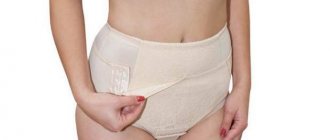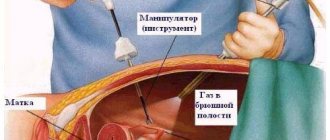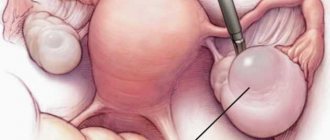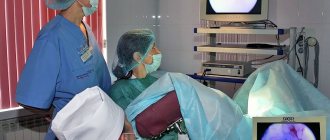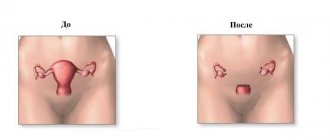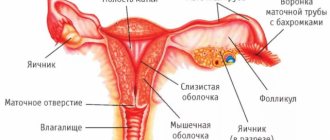Postoperative bandage - how to choose, how long to wear
Carrying out abdominal surgery in the abdominal area is a surgical incision, which, after the procedure is completed, is sutured with special threads.
This place is sensitive to stress and in the first days there is a danger that the suture will come apart and the operation will be repeated again.
Therefore, doctors strongly recommend, immediately after surgery, to wear a special compression bandage to reduce the load on the abdominal area and speed up rehabilitation.
How long should you wear a bandage after abdominal surgery?
The duration of wearing the bandage depends on many indicators:
- Age of the operated patient;
- How quickly does the process of tissue regeneration progress at the site of sutures;
- How difficult was the surgery?
Doctors recommend wearing the bandage for 30 days after surgery. The recovery process will be different for each person, so everything is decided individually.
But long-term wearing also negatively affects the condition of the muscular system in the abdominal cavity. Lack of physical exercise and stress leads to the fact that the muscles under the bandage relax, their tone goes away, and they become flabby. In this case, wearing it for longer than 60 days is not recommended. The optimal period would be from one month to 1.5.
A postoperative abdominal bandage is worn for up to six months in case of physical labor or regular carrying of heavy weights. This is necessary so that the seams do not diverge, since there is strong tension and pressure from the inside.
How long you need to wear a bandage after abdominal surgery is decided by the attending physician individually. When changing dressings, the doctor evaluates the condition of the seam, its healing, and whether swelling is present. This all affects the duration of presence of the compression bandage on the body. Different cases of wearing a bandage
- Age plays a big role in the ability of tissues to regenerate. Therefore, for patients under 30 years of age, new tissue grows in 14 days. When a person is from 30 to 60 years old, the regeneration of the body occurs more slowly and will take more than a month to two;
- Surgery that results in the removal of a woman's uterus. In this case, the bandage should remain on the body for up to 2 months. During this period, the internal seams will heal and be able to withstand loads;
- Laparoscopy is an operation with minimal intervention in the human body. But even after such an operation you need to wear a tightening corset for a week.
It is worth noting that the bandage should not be permanently on the body. Abdominal tightening should not exceed 8 hours per day. But even during this period, it is recommended to remove the belt for a short time so that the peritoneal muscles restore their functioning and maintain their shape on their own. This will also help restore proper blood circulation to the internal organs.
As a rule, the bandage is worn over natural cotton clothing; there should be no seams on it.
It is not forbidden to wear it on a naked body, but then you need to understand that over time the bandage will become dirty, fat, sweat, and particles of dead skin will accumulate on it. We need another bandage, which will serve as a replacement while the first one is washed.
The belt is worn only in a supine position. This allows the internal organs to take the correct places and not be subjected to additional stress.
What is a bandage used for?
When wearing a bandage is prescribed, the following goals are pursued:
- The need to keep internal organs in a natural position. They do not shift, which means that functioning is not impaired;
- Thanks to the tightening belt, the tissues are tightened faster, scarring of the sutures left after surgery occurs;
- By supporting the peritoneum, the risk of a hernia due to a weak wall is reduced;
- Regular wearing of the bandage helps restore the elasticity of the skin;
- Being under the bandage, the seams are protected from the penetration of pathogenic microorganisms;
- The bandage significantly reduces the pain from a fresh wound by reducing the load on the abdomen.
It is noted that when wearing slimming corsets, the possibility of turning and bending remains. In this case, sudden movements are not possible.
The presence of a fixing bandage on the body can not only help with the postoperative period, but also cause harm if used incorrectly. When the presence of a bandage will negatively affect the patient’s health:
- Kidney problems, resulting in swelling;
- Diseases of the internal organs of the digestive system. If an ulcer is diagnosed in the intestinal tract, then compression will lead to a worsening of the situation and exacerbation of the disease;
- Pathological rashes on the skin in the area where the bandage is applied. These could be rashes due to eczema, tumors, wounds;
- Development of purulent inflammation in the suture area, appearance of blood;
- Allergic reaction to the material of the bandage.
Types of postoperative tightening bandages
Each type of operation has its own bandage, and this determines how long to wear the bandage after a certain type of abdominal surgery.
In medicine, two types of slimming products are offered:
- Universal type. Already from the name it is clear that its use is possible for any type of intervention in the abdominal area;
- Specialized. This product is used strictly after a certain type of abdominal surgery. Used to perform specific purposes and tasks. This type of dressing is divided into subtypes:
- Dressed after surgery. Significantly reduces pain, promotes regeneration of damaged tissue, reduces the risk of complications;
- Hernia. Dressed when the hernia descends or comes out, preventing the intestine from completely exiting. This type can be worn even by children;
- Wearing before birth. Helps reduce the load on the lower abdomen and prevents stretch marks. Thanks to the dense back, the spine is supported. Pain in the lumbar region decreases and goes away;
- Pelvic. Used for injuries to the hip joints. Provides bone support and significantly reduces pain;
- After childbirth. When the child comes out, the stomach gradually begins to lower so that the skin does not sag; a tightening bandage is put on and then the muscles are restored, the skin becomes elastic and elastic.
The choice of model is made taking into account the structure of the body, the type of surgical intervention, how comfortable it is to wear, and what material it is made of. It is important to take into account all the criteria, since it is not known in advance how long the bandage should be worn after abdominal surgery, and therefore wearing it should not cause discomfort.
The performance of different functions is achieved by a certain form of a medical device:
- Ribbon belt. Used to stabilize the lower spine. It is often used by pregnant women because it can be secured under the abdomen and reduce the load not only in the back, but also reduce abdominal pressure. In this case, there is no impact on the uterus due to the side elastic bands;
- Bungee briefs. Also used during pregnancy. There is excellent fixation and support for the abdomen. The product has a slightly high waist, with a wide belt. Has inserts to support the back and abdominal area;
- Bungee shorts. The structure and functions are completely identical to the panties. They are shaped like shorts. They are comfortable to wear in winter, much warmer and more comfortable;
- Combined product. The model is a wide belt that can be worn both during normal times and during pregnancy. Thanks to its shape, the product helps distribute the load evenly throughout the body. Rubberized material is used for manufacturing, which indicates the strength and durability of the model. Velcro is used for fixation.
Source: https://gold-meb.ru/ortopedicheskaya-mebel/posleoperatsionnyj-bandazh-kak-vybrat-skolko-nosit.html
Instructions for using a postoperative abdominal bandage
A postoperative abdominal bandage reliably fixes the layers of the abdominal walls injured as a result of surgery.
Gentle immobilization of tissues prevents sutures from coming apart and internal organs from moving. Wearing a tight medical bandage reduces pain, promotes postoperative wound healing and the formation of a thin scar. A postoperative abdominal bandage reliably fixes the layers of the abdominal walls injured as a result of surgery.
Indications
A postoperative (abdominal, compression) abdominal bandage is a wide elastic belt that supports internal organs without squeezing or impairing blood supply.
The purpose of the product is to prevent the development of complications (formation of hernias, adhesions) and reduce the recovery period for patients after abdominal and laparoscopic operations on the digestive and genitourinary systems.
Indications for the use of a postoperative corset:
- surgical interventions on the abdominal organs: removal of the uterus, ovaries, appendix, gallbladder, gastric resection, etc.;
- herniorrhaphy – excision and repair of a hernia of the abdominal wall;
- C-section;
- abdominoplasty – removal of subcutaneous fat and excess skin on the abdomen;
- multiple pregnancy;
- weakness of the abdominal wall and separation of the abdominal muscles (diastasis) in the postpartum period;
- abdominal injuries;
- prolapse of the internal organs of the abdominal cavity, kidneys;
- diseases of the lumbosacral spine: osteochondrosis, spondylosis, protrusions, hernias.
Wearing a postoperative orthopedic belt helps reduce stress on muscles during movement, prevents sutures from coming apart and getting infections into the wound, and relieves pain.
Types of bandages
The postoperative bandage is made of high-strength, elastic and hypoallergenic material. The cellular structure of the fabric ensures air circulation and removes excess moisture from the skin.
Classification of postoperative bandages by purpose:
- preventive (universal);
- therapeutic and prophylactic (anti-hernia);
- medical bandages with a hole for the stoma.
The range of orthopedic products for fixation allows you to select a bandage for each individual case.
The range of orthopedic products for fixation allows you to select a bandage for each individual case. There are models for adults and children, men and women. The men's bandage has a greater degree of rigidity, resembling a corset in appearance.
Female models
Classification by design:
- solid (do not have fasteners, put on with a “stocking”);
- in the form of a belt;
- in the form of panties (shorts) with a wide elastic band.
The bandage is secured using a textile fastener (Velcro, Velcro, contact tape) or a removable elastic tie. Some anatomical models are equipped with 2 side wing fasteners for stronger fixation.
The bandage is secured using a textile fastener (Velcro, Velcro, contact tape) or a removable elastic tie.
Possible additional design elements:
- Soft cotton panel on the inside. It is applied to the abdominal area, does not stretch and fits as tightly as possible to the body. Prevents divergence of postoperative sutures and supports the anterior abdominal wall.
- Stiffening rib. Provide additional lumbar support, improve fixation, and prevent the product from twisting. In products with medium fixation, the stiffening ribs are made of medical plastic. In models with strong fixation, these elements are made of aluminum or its alloys. The more rigid inserts a product has, the stronger the fixation.
- Anti-slip latex tape. Located on the inside of the product. Prevents the bandage from shifting when moving.
- Pockets. Allows the installation of magnetic applicators that have a positive effect on the patient’s tissue: the magnetic field activates metabolic processes, accelerates regeneration, and has anti-inflammatory and analgesic effects.
Design of prenatal (1) and postnatal (2) bandages.
Postoperative compression bandages are available in white, beige and black.
Universal
The universal abdominal belt is an elastic band, wide in the middle and tapering towards the ends. This type of product is especially popular among pregnant women.
Before childbirth, the universal bandage is worn with the wide side on the lower back, securing the ends under the abdomen. This provides reliable support for the uterus and allows you to remove some of the stress from your back.
After the baby is born, the belt is turned over and worn with the wide side on the stomach.
Postpartum universal belt:
- improves abdominal muscle tone;
- accelerates the process of uterine contraction;
- fixes the suture after cesarean section;
- forms an invisible thin scar;
- prevents bowel prolapse.
Some bowel or bladder surgeries require wearing a post-operative bandage with an ostomy hole. Standard hole diameters are 5, 7 and 9 cm.
The design of the bandage prevents protrusion of the internal organs of the abdominal cavity, allows you to reliably fix the surgically formed stoma and remove waste products of the body into a special colostomy bag without complications.
How to choose?
The optimal model of postoperative bandage required by the patient for therapeutic or rehabilitation purposes is selected by the doctor. Universal models are suitable for preventing complications after surgery.
A high-quality belt follows the contours of the figure, fits snugly to the body, does not compress internal organs and does not interfere with blood circulation.
Read more about how to choose a bandage here.
The best way to select a belt for fixing the anterior abdominal wall is to try it on.
The dimensions of the postoperative abdominal bandage are determined by measuring the waist circumference with a centimeter tape. It is also useful to know the girth of the protruding part of the abdomen (the area under the navel) and the upper thighs. The size of the product corresponds to the waist circumference indicated on the packaging.
Characteristics that you should pay attention to when choosing a postoperative bandage:
- product material – preferably “breathable” natural or mixed fabrics (with a cotton base);
- width - the belt should be wide enough to completely cover the seam, protruding beyond the edges of the wound by at least 2 cm;
- elasticity – the bandage should not be overly elastic;
- fixing elements - high-quality ties and Velcro will ensure reliable fixation.
How to wear a post-operative bandage correctly?
The method of using a bandage for the treatment of diseases and rehabilitation after operations is selected on the recommendation of a doctor. The duration of wearing depends on the type and purpose of the fixation belt. The postoperative bandage is worn from 2 weeks to 3 months. This period is sufficient to form a scar and restore the tone of the peritoneal muscles.
General recommendations:
- It is advisable to wear the bandage over seamless cotton underwear. If the model involves its use directly on the body, to maintain the proper level of hygiene, you should purchase a spare product.
- In the first days, it is recommended to wear the bandage while lying on your back. In this case, it is advisable to try several fixation positions and choose the most comfortable one.
- Experts advise periodically taking a break from the bandage. The total time of using the belt and the duration of breaks are selected in each individual case.
- The bandage should be removed at night.
It is advisable to wear the bandage over seamless cotton underwear.
Contraindications
Pathologies for which the use of a postoperative bandage is prohibited:
- open wounds on the body;
- festering suture;
- peeling, rashes on the skin where the body comes into contact with the product;
- individual intolerance to product materials;
- pelvic or transverse position of the fetus during pregnancy more than 30 weeks.
Product care
Despite the fact that the bandage after abdominal surgery is in most cases not used for long, the product should be properly cared for.
The bandage must be washed by hand using mild detergents at a temperature not exceeding +40°C.
Recommended:
- wash the bandage by hand with mild detergents at a temperature not exceeding +40°C;
- rinse the product thoroughly under running water;
- dry flat at room temperature;
- Store the product in a place protected from moisture and direct sunlight.
Forbidden:
- wash, wring out and dry the belt in the washing machine;
- use bleaching agents;
- take the bandage to the dry cleaner;
- iron the belt.
It is prohibited to wash, wring out or dry the belt in a washing machine.
Each product is selected individually, so it is not recommended to transfer postoperative orthopedic products to relatives and friends. The belt must be disposed of after use.
Reviews
Veronica, 36 years old, Krasnoyarsk.
I started using postoperative bandages after I had surgery to remove my gallbladder. I thought for a long time which postoperative abdominal bandage would be better.
She chose the first model on her own and made a fatal mistake: the belt was too loose. A postoperative hernia developed and had to be cut out. The second belt was selected strictly in accordance with the doctor’s recommendations.
And this model met all expectations. About 2 years of use, constant washing - the bandage has withstood everything.
Elena, 24 years old, St. Petersburg.
Due to the anatomical features, I knew from the first weeks of pregnancy that a caesarean section was coming.
Having studied the information, I thought in advance about a quick recovery after childbirth and came to the conclusion that I would choose a postoperative bandage. And I was not mistaken, despite the fact that the price of the product was significant.
Already on the third day after the operation, she fluttered around the department and took the baby in her arms without fear. Thanks to the belt, I recovered so quickly.
Source: https://gryzhu.ru/vidy/zhivot/bandazh/posleoperatsionnyj
How long should you wear a bandage after abdominal surgery?
Carrying out abdominal surgery in the abdominal area is a surgical incision, which, after the procedure is completed, is sutured with special threads.
This place is sensitive to stress and in the first days there is a danger that the suture will come apart and the operation will be repeated again.
Therefore, doctors strongly recommend, immediately after surgery, to wear a special compression bandage to reduce the load on the abdominal area and speed up rehabilitation.
Product selection
After surgery, the attending physician makes medication prescriptions and tells you how long to wear the bandage after abdominal surgery. Therefore, choosing the right medical product will allow the rehabilitation period to pass in comfort.
Criteria for choosing the right product:
- First of all, you should choose the right size. If the belt is small, then strong compression of the internal organs will lead to disruption of their functioning. As a result of wearing a small belt, the blood supply to the tissues is disrupted and they begin to die. If the purchased product is larger, then the desired effect will not be achieved, the abdominal cavity will remain without support. To select the size you will need your waist circumference. When measuring, try not to pull the tape;
- The height of the product is of no small importance. It should be sufficient to completely close the seam, preventing pathogenic microorganisms from entering the fresh wound;
- The choice of material used to make the tightening bandage after surgery is also important. Medical products are made from hypoallergenic fabrics that are highly breathable and do not retain moisture. As a result, a microclimate is created under the bandage, which prevents the skin from sweating too much. Postoperative sutures are not covered with moisture, but remain dry and continue to heal. Fabrics taken are rubberized with good stretchability - these are latex, elastane, lycra;
- It is not advisable to buy a belt in advance. A person may lose weight or gain weight. Therefore, it is better to buy immediately after the operation;
- Clasps. How conveniently are the fixing parts placed? When wearing, the locations of the fasteners should not rub. It is desirable that the fixation takes place at several levels, then the load will be distributed evenly;
- When purchasing a waist belt, you should try it on in several positions to understand how comfortable the product is;
- You should not decide on the cost of the model. A high price does not always mean a high-quality and comfortable product. A distinctive feature of quality in a bandage is its density, but not rigidity. During wear, it retains its shape, the edges do not bend. The abdomen is supported, there is no feeling of squeezing, blood circulates in sufficient quantities;
- Buying a used bandage may have hidden disadvantages. The bandage may no longer perform its functions; the tightening is not as effective as with a new one.
Any product must be properly looked after, then it will serve for a long time. The same applies to the bandage. If you take proper care of it, the product will retain its beneficial properties for a long time. Rules for caring for a compression bandage:
- Products made from rubberized fabric should be washed well in warm water and soap. This is enough to achieve cleanliness on the surface of the belt;
- Cotton models should not be machine washed. To remove dirt, you will need baby soap or washing powder designed for children's clothes. Hand wash only;
- The product is first fastened with all fasteners. This makes it much more convenient to wash and the model will not lose its shape;
- When caring for the bandage, you should not use products with aggressive bleaches, since these substances will then negatively affect the skin, causing allergies;
- The product will not last long if the spin cycle is carried out in the drum of a washing machine. You should thoroughly rinse your hands to remove all traces of detergent. Squeeze with your hands, gently, not forcefully. You cannot hang the belt to dry. It should lie on a flat surface, preventing stretching. The product does not need ironing.
Surgery is stressful for the body. The rehabilitation period may take a long time. To help the body cope with regeneration and recovery faster, a bandage is used.
It helps reduce the load on internal organs, relieves back pain, and allows the postoperative suture to heal faster.
Choosing the right compression bandage is not difficult, but it will help shorten the recovery period.
Source: https://PosleVipiski.ru/hirurgiya/skolko-nosit-bandazh-posle-polostnoj-operatsii.html
Should I remove the bandage at night after giving birth?
After childbirth, an abdominal bandage restores tone to stretched muscles, preventing the belly from sagging. At the same time, the bandage maintains the correct position of the internal organs, preventing the kidneys and uterus from moving into the pelvic area. In this case, the bandage helps to avoid complications - kidney inflammation, urolithiasis and gynecological problems.
The bandage must be removed at night after childbirth. If an abdominal bandage takes on the burden of supporting the anterior abdominal wall around the clock, instead of strengthening the abdominal muscles, the bandage will only weaken them. By removing the bandage at night, the patient improves blood circulation in the abdominal area. This helps restore muscle tone faster .
How long to wear a bandage after gallbladder removal surgery
Gallbladder › Operation
24.12.2018
An operation to remove the gallbladder - cholecystectomy - is performed in cases of exacerbation of cholelithiasis using the open cavity method (laparotomy) or through laparoscopy. Following surgery, there is a long recovery period, during which the patient is prescribed to wear a bandage.
Purpose of the postoperative bandage
The role of the bandage after removal of the gallbladder is to tightly fix the spine and ribs, it helps maintain muscle tone. In this way, it is possible to reduce the load on the area undergoing surgery. A simple technique helps prevent the risk of postoperative complications:
- Damage to the blood vessels surrounding the wound.
- Bleeding of various natures.
- Penetration of bile into the abdominal cavity.
- Seams coming apart.
- Purulent processes in the wound area.
- Postoperative hernias.
To achieve the best results, it is important to fix the bandage correctly. The patient receives relief from the first day of wearing the bandage. The size of the product is selected individually. During rest, it can be removed to restore normal blood flow.
The effect of tightening on the recovery process after surgery depends on the method used to remove the gallbladder:
- Laparotomy. Prescribed when the patient has a number of complications of the underlying disease. A large incision is made in the area of the right hypochondrium to open access to the gallbladder. The bandage is designed to rigidly fix the postoperative suture and prevent mechanical displacement of tissues and organs. The likelihood of a postoperative hernia is reduced, the healing process is accelerated, and visually the seam after healing is less noticeable.
- Laparoscopy. It is performed through incisions 0.5-1.5 cm long, into which surgical instruments are inserted. This technique is much less traumatic than laparotomy, but is not applicable in all cases. Not all doctors agree that wearing bandages after such operations is mandatory. However, most agree that with their help they can reduce the load on the injured area and reduce the patient's discomfort during rehabilitation.
The question of whether a bandage is needed after removal of the gallbladder does not arise in cases where the operation was performed in an open manner with displacement of internal organs. Refusal to use a bandage against the surgeon’s recommendation will lead to difficult-to-treat postoperative complications.
What does he look like
Externally, the product is a wide, very dense strip with rounded edges. It is sewn from high-tech synthetic materials, equipped with elastic inserts and fixing Velcro. The color can be any, but black and white shades are more common.
It is advisable to try on the model you like in a salon that sells medical supplies, since they all differ in cut and number of degrees of adjustment. An incorrectly selected product may be too large or small and such items cannot be returned.
Important: you cannot buy used bandages. As they are used, they stretch and lose their original elasticity. Such a product will no longer be able to bring benefits.
Nuances of choice
Before purchasing, you must carefully study the manufacturer's instructions and also check:
- Size. It should match the patient's waist circumference. The height of a correctly selected bandage should completely cover the postoperative sutures.
- Material. It is chosen in such a way as not to create a greenhouse effect under the bandage. The skin should breathe freely and sweat should evaporate. Cotton, elastane, and rubberized latex are used for sewing. Choose the material to which you are not allergic.
- Number of adjustment steps. Advanced models have several rows of Velcro and fasteners, which allows you to fasten them like a corset, precisely fitting them to your figure.
The final fitting must be done in conjunction with the surgeon who performed the operation. The doctor will help you adjust the tightening and show you how to put it on correctly.
Wearing rules
Manufacturers usually place instructions for use on the packaging of bandages. It lists the procedure:
- Put on the bandage while lying on your back and secure it with Velcro while exhaling incompletely.
- The bandage is worn for the first time on the day after surgery, since at this time the patient most needs fixation of postoperative sutures.
- After putting on the bandage, the pain should decrease. If the pain intensifies, then the pressure of the bandage on the abdomen needs to be eased.
- Before going to bed, the bandage is removed to avoid compression of the internal organs at night.
- It is not recommended to tighten the fastener too much, as this impairs air circulation and may cause the postoperative sutures to begin to sweat.
Since the wearing period is long and the bandage is not removed almost all day, you should buy 2 bandages at once. While one is drying after washing, the patient uses the second.
Wearing time
The surgeon reports how long to wear the bandage. There are no exact recommendations, since the patient’s age, weight, and the success of postoperative rehabilitation therapy are important.
After laparotomy
Young patients recover much faster after surgery than older patients. The surgeon prescribes wearing a fixing bandage for 2-3 months, after which the healing process is completed. An elderly person, who also suffers from obesity, will have to wear a bandage for at least six months or longer.
After laparoscopy
In the case of cholecystectomy performed laparoscopically, the rehabilitation period is reduced by at least half. Punctures heal faster than abdominal incisions. The support bandage prevents inflammation by preventing foreign objects and germs from entering the wound.
Traditionally, the duration of use of the bandage after laparoscopy does not exceed 1 month. You need to check with your surgeon exactly how long you need to wear a bandage after surgery to remove the gallbladder.
How to care for your bandage
The medical device must be properly maintained. This will prevent it from failing prematurely and will prevent the wound from becoming infected. Rules of care:
- Washing is done by hand in warm water (up to 40ºС). Do not wash, dry, or spin in a washing machine.
- Rinse the detergent thoroughly.
- Dry the bandage after washing at room temperature, carefully straightening it.
- Store only in a closet, not leaving it in the sun.
- Do not use bleaches.
- Do not iron or steam.
Proper care will extend the life of the product and maintain its elastic properties.
The decision about what postoperative bandage the patient needs and how long to wear it is made by the surgeon. You should purchase a suitable type of bandage and carry out the first fitting with the help of a doctor. It is important to follow the recommendations for using the bandage and properly care for the product.
How long to wear a bandage after gallbladder removal surgery Link to main publication
Source: https://puzyr.info/skolko-nosit-bandazh/
Are there night bandages?
There are no night braces. However, when moving, flying on an airplane or traveling, a situation may arise when it is impossible to remove the bandage at night. In this case, you need to act in the same way as during the day: once every 3-4 hours, unfasten the bandage for 30 minutes to restore blood circulation in the abdominal area.
Surgeon of the highest qualification category. Work experience in planned and emergency surgery for 26 years.
He graduated from the Kuibyshev Medical Institute in 1990 with a degree in general medicine. Internship in surgery at Regional Hospital No. 1 of Ulyanovsk.
He underwent repeated advanced training and advanced training at the bases of Ulyanovsk State University, Penza, N-Novgorod on the topics: “Current issues of emergency surgery of the thoracic and abdominal organs,” also in St. Petersburg on “Endovideosurgery of the abdominal organs and retroperitoneal space.”
Performs various types of planned and emergency surgical interventions, operations for purulent processes.
During my work, I mastered various surgical techniques:
- removal of benign tumors of the skin and subcutaneous tissue (atheroma, lipoma, fibroma, etc.) of various locations;
- opening of abscesses, phlegmons, felons, necrectomy of various localizations, including amputation and disarticulation of both fingers and limbs (upper and lower), for example. for diabetic or atherosclerotic gangrene;
- various types of hernia repairs for inguinal, femoral, umbilical, postoperative hernias, both tension and non-tension types of plastic surgery;
- gastric resection according to B-1, B-2 with various types of anastomoses;
- cholecystectomy (laparotomy) with various types of both external and internal (IDA) drainage of the common bile duct;
- little experience in laparoscopic operations, mainly assisting with cholecystectomies and appendectomies;
- appendectomy;
- suturing of perforated ulcers of the stomach and duodenum;
- splenectomy;
- resection of the small and large intestines with various types of intestinal anastomoses for various conditions (obstructive and adhesive intestinal obstructions, etc.), hemicolectomy;
- laparotomy for various injuries of internal organs (suturing wounds of the liver, wounds of the intestine, mesentery, pancreas, etc.);
- other types of emergency interventions on the abdominal organs.
Bandage after gastric ulcer surgery
Doctors recommend wearing a bandage after surgery for patients who have undergone a number of surgical interventions. By using this device wisely, patients can recover from radical treatment much faster.
Functions of a postoperative bandage
A postoperative bandage is necessary to keep the organs in their normal position. Postoperative sutures heal faster, scars become less noticeable. Wearing such an abdominal bandage minimizes the risk of developing hernias, adhesions and pathological scarring of tissue.
A correctly used medical accessory solves the following problems:
- Partially relieves pain and discomfort during movement;
- Prevents divergence of postoperative sutures and scar strictures;
- Improves lymph and blood circulation, which significantly speeds up the healing process;
- Allows you to improve the motor activity of patients who have undergone serious interventions (amputations, organ removal, complex heart surgeries);
- Significantly reduces the level of load on the spine, which is especially important for patients with osteochondrosis or vertebral hernias.
The product protects the skin and muscle tissue from excessive stretching. A medical accessory aesthetically and physiologically allows a person to feel much more comfortable.
Indications for use
It is important not to confuse a medical bandage with shapewear or shapewear. It should not squeeze or pinch organs or body parts. Direct indications for wearing this device are:
- Uterus removal;
- Appendix removal;
- Gastric resection;
- Elimination of hernias of various types and localization;
- Coronary artery bypass grafting and other complex heart surgeries;
- Fixation of elements to support organs prone to pathological prolapse;
- Some cosmetic procedures (removal of large amounts of subcutaneous fat).
Types of bandages
A bandage after surgery, as a medical device, can only be selected with the help of the attending physician. There are several types of these accessories, which differ significantly from each other.
There are two main types:
- A universal system for the rehabilitation of all patients in need of rehabilitation after abdominal surgery;
- A highly specialized bandage, the use of which is aimed at eliminating a specific specific problem. For example, for the rehabilitation of a woman after hysterectomy or to ensure that an inguinal hernia does not recur after surgery.
Design Features
The bandage after abdominal surgery resembles a tight belt with an elastic structure. A wide cloth is fixed around the torso. This product looks like something between a corset and a belt.
After surgery for resection of the uterus or removal of the fallopian tube, patients are recommended to wear models that resemble panties with a wide belt. If during the operation the surgeon formed a colostomy, then a medical device with a slot for a colostomy bag is selected.
Sometimes patients need particularly strong fixation. For these purposes, orthopedic accessories with plastic stiffeners are used.
A bandage after a complex heart operation is somewhat reminiscent of a T-shirt. The models are equipped with wide adjustable straps that allow you to set fixation points at different levels. Some products require holes for the mammary glands.
Materials
Most bandages are made from high-quality elastic materials that are comfortable to wear and also cope well with the assigned medical tasks. Most popular materials:
- Rubberized fabric;
- Cotton with added elastane;
- Cotton lycra based.
The post-operative bandage should have strong fasteners or Velcro strips. In some cases, it is appropriate to use models with buttons or hooks. The main thing is that they do not irritate the skin.
How to choose a product for yourself
Before purchasing a medical accessory, you need to measure your waist size. The more accurate the measurements, the more comfortable it will be to wear the selected model.
In addition to width, the length of the product is considered an important parameter. The bandage must completely cover the postoperative suture, regardless of the location of the scar: on the chest or lower abdomen after removal of the uterus.
Delicate nuances
Excessively wide models are not practical. The edges can tuck and curl, injuring delicate skin and the postoperative scar. For example, short patients with a scar located below the navel will benefit from narrow accessories no more than 25 centimeters wide.
The product is usually put on while lying down. Two options are practiced:
- Putting the device on underwear;
- Using an accessory on a naked body.
Expert help
In any case, the fabric must be hygroscopic and of high quality. Fully synthetic models can cause irritation, so it is better to give preference to natural-based materials.
The first fitting should take place in the doctor's office. He will help you put on the product correctly, make sure that the specified fixation points correspond to the physiological norm, and that the auxiliary elements of the model do not exert unnecessary pressure or injure the skin or postoperative scar.
About false economy
It is strictly forbidden to use used products. Even if the device was previously worn by one of the close relatives.
The material tends to wear out and stretch. This means that the used product will no longer be able to provide the necessary compression.
Delicate fabrics should not be machine washed, boiled or disinfected. Bandages can only be washed by hand. This means that biological material from the previous owner will remain on the tissue, which can lead to infection.
Types of bandage
Universal bandages have a supporting effect on the abdominal area and are used after abdominal surgery.
Previously, there were no products of this kind on the market. For these purposes, they used an ordinary diaper or sheet, which was tied tightly around the stomach. Now manufacturers are increasingly improving this medical product. Trying to make the postoperative period as easy as possible for patients. It is very difficult not to get confused in all the diversity presented. And in order to choose the best option, you need to understand the possible variations of this medical product.
Bandage belt
The most common option. It is a belt that covers the abdominal area and reaches the hips. The width can vary from 15 to 30 cm. It is usually made of dense elastic fabric with natural inserts in the front so as not to irritate the skin near the wound. You can find dense and lighter options made of perforated material for the summer. The most convenient options are those with Velcro located along the entire height of the belt. And additional fasteners that allow you to adjust the degree of tightening without removing the belt. These models can be equipped with stiffening ribs for better fixation and reduced deformation of the product.
Provides good abdominal and incision support
These models are very convenient at the initial stage of the recovery period. Because they make it possible to put on a bandage without anyone’s help while lying down. After a caesarean section, it is very difficult to get out of bed at first. And with a bandage belt, this task is greatly simplified.
The universal 2-in-1 bandages available in pharmacies are not suitable for use after a caesarean section. Since their design involves fastening the belt on the lower back during the postpartum period. Which is impossible to do in a lying position, much less without help. And even if you manage to do this, such a bandage does not provide the necessary supporting effect in the seam area.
The 2 in 1 bandage is not suitable for use after caesarean section
How to choose the right bandage, selection criteria: size, fabric, model, comfort
Whatever model a woman chooses, the main condition for the correct choice is the accurately selected size. When purchasing a support product in advance, you can try to guess the size by adhering to the following recommendations:
- if you gain weight within 10 kg, you can purchase a bandage of the same size as before pregnancy;
- if the weight gain was 10–12 kg, then it is better to take the product one size larger;
- If a woman has gained more than 15 kg, it is better to take a bandage 2 sizes larger.
And the most win-win option is after the operation to ask someone to take the appropriate measurements and purchase a bandage according to specific sizes. This way, you are more likely to receive a product that will only bring benefits without unnecessary discomfort.
How to properly put on a bandage after a caesarean section
You should start using a bandage after a caesarean section from the moment you first get out of bed after surgery. This usually happens within a day. This procedure should be performed in a lying position with the muscles as relaxed as possible. It is necessary to fasten the product from the hip line, gradually rising higher. There is no need to tighten it too much right away. It is better to adjust the support strength after lifting using the second Velcro. The bandage should fit tightly to the body, but not cause discomfort. Otherwise, you can disrupt blood flow and harm your health.
Contraindications
But there are cases when wearing a bandage is strictly prohibited.
- Inflammatory process in the suture area.
- Development of edema associated with renal or cardiac pathologies.
- Abdominal pain of unknown origin.
- Disruption of the gastrointestinal tract.
- Skin diseases on the abdomen.
- Allergic reaction to the material of the bandage.
- Longitudinal seam.
A bandage after a caesarean section can reduce pain and return to a full life. Provided the model and size are correctly selected, this type of support underwear will help the body cope with post-operative stress more quickly. And fully enjoy communication with your beloved little man, who needs so much attention and care.
